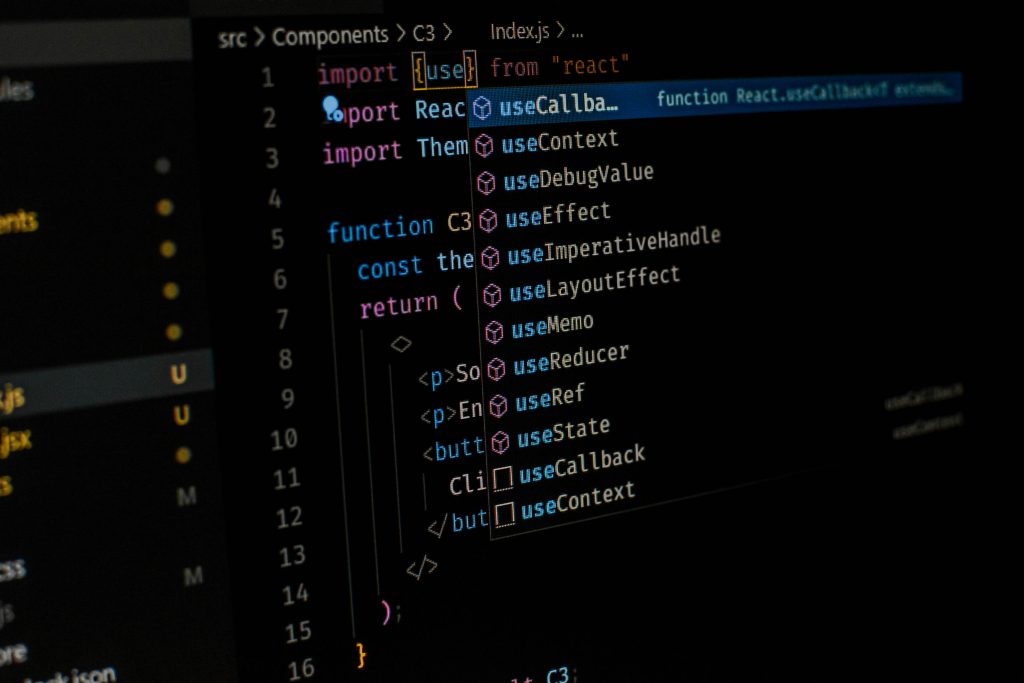Introduction
In today’s competitive IT industry, success is often measured by data-driven insights. Key Performance Indicators (KPIs) play a crucial role in programming, helping organizations monitor progress, make informed decisions, and drive improvements. Understanding the importance of KPIs in programming is essential for unlocking success. This article explores the concept of KPI in programming, highlights key KPIs in the IT industry, discusses how to measure and set KPIs in programming projects, and provides insights into analyzing KPI data to drive improvements.
What is KPI in Programming?
KPI, or Key Performance Indicator, is a measurable value that demonstrates how effectively an organization is achieving its key objectives. In programming, KPIs are used to measure the performance, efficiency, and quality of software development processes and projects. They provide insights into the progress of development teams, identify areas for improvement, and help organizations align their programming efforts with strategic goals.
Understanding the Importance of KPIs in Programming
KPIs play a vital role in programming by providing objective metrics that enable organizations to evaluate the success of their development efforts. By understanding the importance of KPIs in programming, organizations can make data driven decisions, optimize resource allocation, and improve overall project outcomes. KPIs also help teams stay focused, motivated, and accountable, as they provide a clear framework for measuring success.
Key KPIs in the IT Industry
The IT industry encompasses a wide range of activities, and key KPIs may vary depending on the specific area of focus. However, some common KPIs in the IT industry include:
- Code Quality: This KPI measures the quality and reliability of software code. It can be measured through metrics such as code review ratings, bug density, and code complexity.
- Delivery Time: This KPI measures the time it takes to deliver software projects. It helps organizations track project efficiency and identify bottlenecks in the development process.
- Customer Satisfaction: This KPI gauges the satisfaction levels of customers using software products or services. It is typically measured through customer surveys, feedback ratings, and customer retention rates.
- Bug Fixing Time: This KPI measures the time it takes to resolve reported bugs or issues in software. It helps organizations gauge their responsiveness and efficiency in addressing customer concerns.
KPI for Leadership Development Program
In addition to project-level KPIs, organizations often have KPIs specific to leadership development programs. These KPIs evaluate the effectiveness of leadership training initiatives and the growth of leaders within the organization. Some common KPIs for leadership development programs include:
- Employee Engagement: Firstly, this KPI measures the level of employee engagement and satisfaction within the leadership development program. It can be measured through surveys, feedback, and retention rates.
- Leadership Skills Acquisition: Secondly, this KPI assesses the acquisition and application of leadership skills by program participants. It can be measured through competency assessments, leadership evaluations, and performance reviews.
- Lastly, Promotion Rates: This KPI tracks the rate at which program participants are promoted to higher leadership positions within the organization. It reflects the effectiveness of the program in developing future leaders.
By monitoring these KPIs, organizations can gauge the success of their leadership development initiatives and make informed decisions for improvement.

What are KPIs in Software Development?
KPIs in software development are specific metrics used to evaluate the performance and progress of development teams, projects, and products. These KPIs provide insights into areas such as code quality, delivery time, customer satisfaction, and team productivity. By tracking and analyzing these KPIs, organizations can identify areas for improvement, optimize development processes, and enhance overall software quality.
How to Measure Software Developer KPIs?
Measuring software developer KPIs requires the collection and analysis of relevant data. Transitioning into the discussion of common methods, some common methods for measuring software developer KPIs include the following. Firstly, automated code analysis tools, such as static code analyzers and code review platforms, can provide insights into code quality metrics, including code complexity, maintainability, and adherence to coding standards. Secondly, issue tracking systems are valuable for measuring KPIs related to bug fixing time and customer satisfaction. By tracking the time taken to resolve reported issues and monitoring customer feedback, organizations can assess their performance in these areas.
Lastly, version control systems allow organizations to track changes made to software code over time, which can be used to measure productivity-related KPIs, such as the number of commits, lines of code added or modified, and the frequency of code reviews. By employing these methods, organizations can effectively monitor and evaluate the performance of their software development teams.
How to Set KPIs in Programming Projects
Setting effective KPIs in programming projects requires a clear understanding of project goals and key performance indicators. Transitioning into discussing the steps to help set KPIs, here are some to consider. Firstly, define project objectives to provide a foundation for identifying relevant KPIs, including desired outcomes, timelines, and deliverables. Secondly, identify key metrics aligned with the project objectives. For example, if the project aims to improve code quality, relevant KPIs could include code review ratings, bug density, and test coverage.
Transitioning to the next step, set specific targets or benchmarks for each KPI that are realistic, measurable, and aligned with project goals. Clear targets provide a benchmark for evaluating progress and success. Lastly, continuously monitor and evaluate the KPIs throughout the project lifecycle. Regularly reviewing the data, identifying trends, and making adjustments as necessary ensure progress towards the desired outcomes. By following these steps, organizations can effectively set and track KPIs in programming projects to drive success.
Tools and Techniques for Tracking KPIs in Programming
Tracking KPIs in programming requires the use of tools and techniques that enable efficient data collection, analysis, and reporting. Some common tools and techniques for tracking KPIs in programming include:
- Dashboard and Reporting Tools: Utilize dashboard and reporting tools that allow for real-time monitoring and visualization of KPIs. These tools facilitate data-driven decision-making and enable stakeholders to stay informed about project progress.
- Automated Testing Frameworks: Implement automated testing frameworks to measure KPIs related to code quality, such as test coverage, code complexity, and bug detection. These frameworks provide objective metrics and streamline the testing process.
- Project Management Software: Use project management software that incorporates KPI tracking features. These platforms allow for centralized monitoring of project-related KPIs, task management, and collaboration among team members.
Analyzing KPI Data to Drive Insights and Improvements
Analyzing KPI data is essential for deriving insights and driving improvements in programming projects. Transitioning into discussing approaches to analyzing KPI data, organizations can identify patterns, trends, and areas for optimization by leveraging data analysis techniques. Firstly, a comparative analysis is valuable. Compare KPI data across different time periods, projects, or teams to identify trends and patterns. This analysis can reveal potential areas for improvement or highlight successful strategies that can be replicated.
Secondly, a root cause analysis is essential. Conduct a root cause analysis to identify the underlying factors contributing to KPI performance. By understanding the root causes, organizations can develop targeted solutions and interventions to address performance gaps. Lastly, correlation analysis is insightful. Analyze the correlation between different KPIs to uncover relationships and dependencies. This analysis can provide insights into how changes in one KPI may impact others, helping organizations make informed decisions and prioritize improvement efforts. By employing these approaches, organizations can effectively leverage KPI data to enhance their programming projects and drive success.
What are KPIs in the Tech Industry?
KPIs in the tech industry encompass a wide range of metrics used to evaluate the performance and success of technology-driven organizations. Transitioning into discussing common KPIs, these metrics can span areas such as product development, customer support, sales, and marketing. Firstly, revenue growth is a crucial KPI that measures the rate at which a tech company’s revenue is increasing over time. This reflects the company’s ability to attract and retain customers and generate sustainable growth. Secondly, customer acquisition cost calculates the cost of acquiring new customers, including marketing expenses, sales efforts, and customer onboarding. This KPI helps organizations assess the efficiency of their customer acquisition strategies.
Lastly, churn rate measures the rate at which customers stop using a tech product or service. A high churn rate may indicate issues with product quality, customer support, or market fit, requiring remedial actions. By monitoring and analyzing these KPIs, tech organizations can gain insights into their performance and make informed decisions to drive success.
What is the KPI of a SaaS Business?
In a Software-as-a-Service (SaaS) business model, specific KPIs are used to evaluate the performance and success of the business. Some common KPIs for SaaS businesses include:
- Monthly Recurring Revenue (MRR): This KPI measures the predictable revenue generated each month from subscription-based customers. It provides insights into the stability and growth potential of the SaaS business.
- Customer Lifetime Value (CLTV): This KPI calculates the total revenue generated from a customer over the entire duration of their relationship with the SaaS business. It helps organizations assess the profitability of acquiring and retaining customers.
- Churn Rate: As mentioned earlier, churn rate is also a critical KPI for SaaS businesses, as it indicates the rate at which customers are canceling their subscriptions. Minimizing churn is essential for sustaining growth and profitability.
Challenges and Common Pitfalls in KPI Programming
While KPI programming offers significant benefits, there are challenges and common pitfalls that organizations should be aware of. Transitioning into discussing these challenges, firstly, data quality is paramount. Ensuring the accuracy, completeness, and reliability of data used for KPI programming can be challenging. To address this, organizations must invest in data governance practices and establish data quality control measures. Secondly, overemphasis on quantity poses a risk. Focusing solely on quantity-based KPIs may lead to neglecting other important aspects, such as quality, customer satisfaction, and employee well-being. It is crucial to strike a balance between quantity and quality KPIs to maintain holistic performance evaluation.
Lastly, lack of alignment with strategic goals is a challenge. KPIs should align with the organization’s strategic goals and objectives to ensure effective decision-making. To mitigate this challenge, organizations should regularly reassess and realign KPIs with their evolving needs and objectives. By addressing these challenges proactively, organizations can optimize their KPI programming efforts and drive sustainable growth and success.
Best Practices for Effective KPI Programming
To ensure effective KPI programming, organizations should follow these best practices. Firstly, align KPIs with objectives, ensuring they are directly linked to the organization’s strategic goals. This step ensures that each KPI contributes to the overall success of the organization and is measurable. Transitioning to the next best practice, regular monitoring and reporting are essential. Continuously monitor and report KPIs to keep stakeholders informed about progress and performance. Regular reporting facilitates data-driven decision-making and enables timely interventions. Lastly, engage stakeholders throughout the KPI programming process. Involving relevant stakeholders ensures buy-in, alignment, and ownership. Moreover, stakeholder engagement promotes accountability and fosters a culture of continuous improvement. By adhering to these best practices, organizations can optimize their KPI programming efforts and drive success effectively.
Conclusion: Leveraging KPI Programming for Success in the IT Industry
In conclusion, KPI programming is essential for unlocking success in the IT industry. By understanding the importance of KPIs in programming, organizations can make data-driven decisions, optimize resource allocation, and improve overall project outcomes. Key KPIs in the IT industry include code quality, delivery time, customer satisfaction, and bug fixing time. By measuring and analyzing KPI data, organizations can drive insights and improvements, ultimately leading to success in the highly competitive IT industry. Embracing best practices and addressing common pitfalls will ensure effective KPI programming and sustained growth.









Leave a Reply